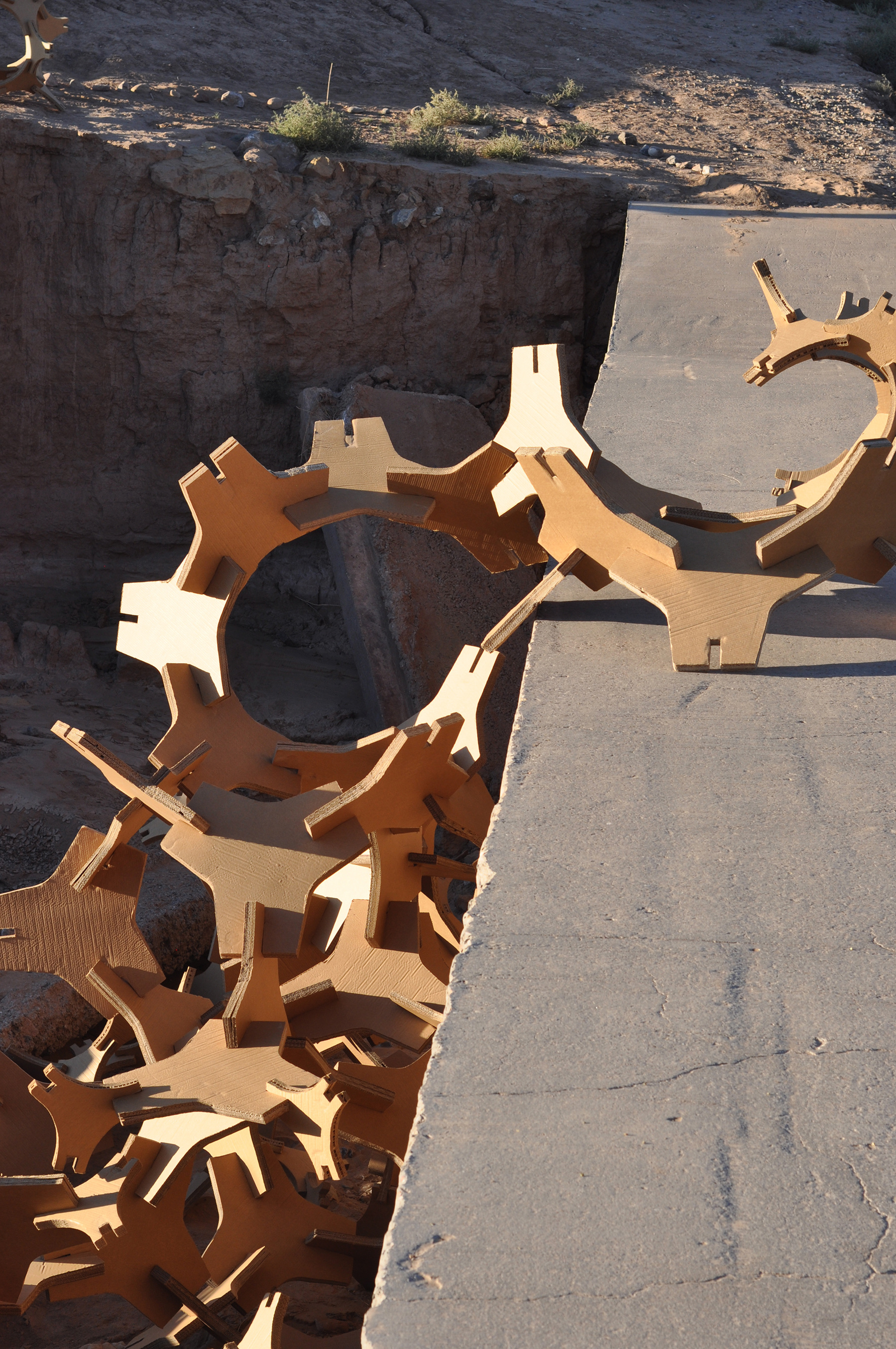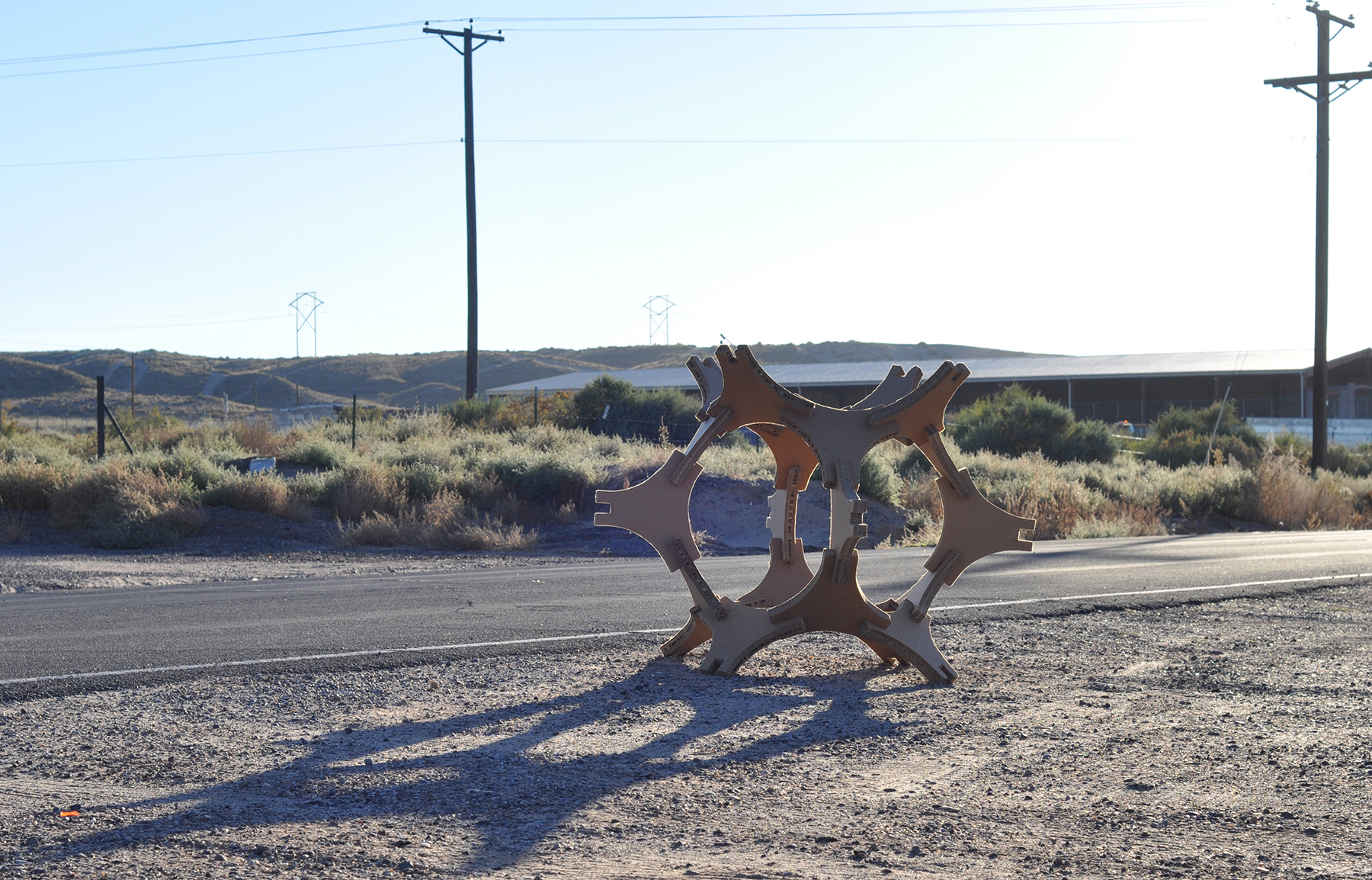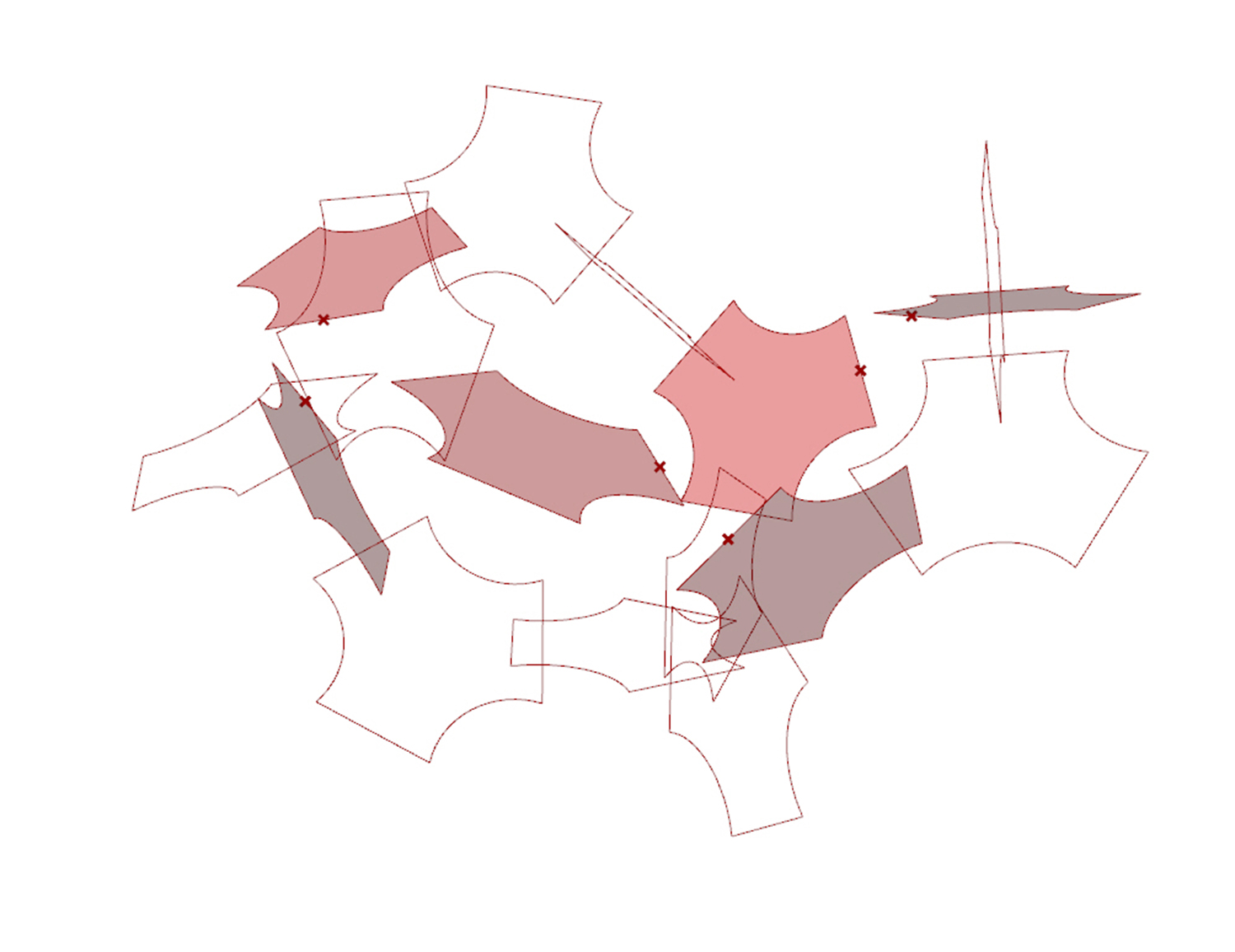Modules + Spaces
Morphogenesis in the Landscape: Algaeic Infrastructure
Catherine Page Harris
Morphogenesis in the Landscape: Algaeic Infrastructure
October 2013
Among the many emerging discourses and technologies potentially adhering to landscapes, morphogenesis, conceived of as an architectural theory, derives materiality, functionality, and form from the biotic world. As part of a discussion of “data driven” or “bottom up” design, Leach’s morphogenesis recognizes that “nature itself can teach us about the efficiency of certain structural organizations.” 1.
This project experiments with morphogenesis in the landscape. Catherine Harris, Alex Webb IV and Nina Dubois developed a morphogenetic module, built 330 copies of it, and created an emergent intervention (Algeaic Infrastructure) for Montessa Park, Albuquerque in October 2013 for High Desert Test Site.
Built from recycled cardboard, Algeaic Infrastructure proposed an emergent pattern, derived from the module’s form, the landscape’s form, and process of building. The structure has no determined assembly. The structure is created by interactive rules similar to the development of computer programs that “think”2. and thus physically models a version of “learning.”
The interlocking system was deployed along an arroyo as an event space for HDTS in October 2013. The forms result from a computer model and a physical model at one quarter scale to determine geometry and assembly. The project site is Montessa Park, Albuquerque, NM, where the city’s edge intersects the military base and the airport. A past dairy, deep downcutting of the arroyo, a prison farm, and current “sacrifice” uses, such as ATVs, shooting ranges, and garbage collection layer this in-between landscape.




